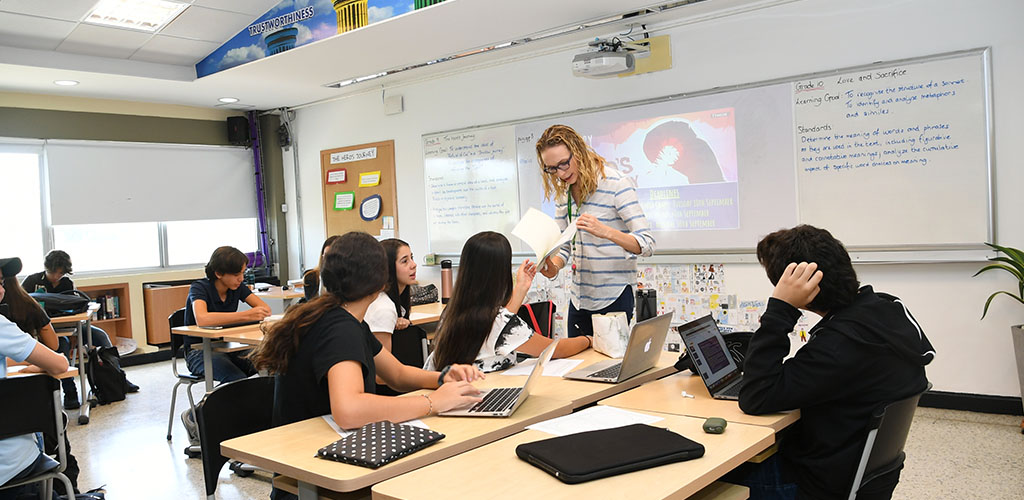
By: Jessica StillmanContributor, Inc.com @EntryLevelRebel
Kids are naturally creative. Here’s how to keep school and society from dimming that spark.
Across America, kids have headed back to school over the last couple of weeks. They’re settling into classroom life and getting to know their teachers and schoolmates. And unfortunately, for many kids, they’re also already starting to feel the creativity-dulling effects of our education system.
It’s not that most educators aren’t dedicated to the best outcomes for students, of course. But according to Mitchel Resnick, professor of learning research at MIT and head of the Lifelong Kindergarten group at the MIT Media Lab, the way we teach kids often has the unfortunate side effect of snuffing out their natural instinct to create and problem solve.
The most important skill for an uncertain future is creativity.
The endless parade of flashcards and worksheets that fills up many school days might stuff facts into kids’ heads and prepare them for tests, but it doesn’t teach them to put that knowledge to use in new ways. In fact, this kind of rote learning can dull children’s drive to solve problems and create.
“Often in traditional schooling, the view is that we have to learn the skills and concepts before working on projects. You have to learn the basics first and then you can apply them. I think that’s misguided because you end up learning a lot of disconnected facts and skills, and then you’re not able to make use of it in a meaningful way,” Resnick explained in an interview with EdSurge.
In our fast-changing world kids need not just to know stuff, but to have the confidence to apply that knowledge to new situations. We can’t prepare our kids for the future because we don’t know what it will look like. All we can do is help them develop the tools to adapt to whatever the world throws at them.
-
Show examples. “A blank page, a blank canvas, and a blank screen can be intimidating. A collection of examples can help spark the imagination,” Resnick says. It’s OK if kids just copy these examples to start, but “encourage them to change or modify the examples. Suggest that they insert their own voice or add their own personal touch.”
-
Encourage messing around: “Most people assume that imagination takes place in the head, but the hands are just as important,” Resnick writes. “As children play with LEGO bricks or tinker with craft materials, new ideas emerge. What started as an aimless activity becomes the beginning of an extended project.”
-
Provide a wide variety of materials. “Children are deeply influenced by the toys, tools, and materials in the world around them. To engage children in creative activities, make sure they have access to a broad diversity of materials for drawing, building, and crafting,” he says. Pipe cleaners are just as valuable as a fancy new robotics kit.
-
Embrace all types of making. “Help children find the type of making that resonates for them,” advises Resnick. Whether it’s building with bricks, writing a poem, baking a cake, or creating computer animations, it’s all good.
-
Emphasize process, not product. “As children work on projects, highlight the process, not just the final product. Ask children about their strategies and their sources of inspiration. Encourage experimentation by honoring failed experiments as much as successful ones. Allocate times for children to share the intermediate stages of their projects and discuss what they plan to do next and why,” he instructs.
-
Extend time for projects. Don’t try to squeeze projects into short, fixed time periods. “It discourages risk taking and experimentation, and it puts a priority on efficiently getting to the ‘right’ answer within the allotted time,” Resnick cautions. Set aside bigger blocks of time for creating as best you can based on the constraints of your schedule.
-
Play matchmaker. Collaboration is a key part of creativity. It’s your job to facilitate it: “You can play the role of matchmaker, helping children find others to work with, whether in the physical world or the online world.”
-
Be a collaborator. “Parents and mentors sometimes get too involved in children’s creative projects, telling children what to do or grabbing the keyboard to show them how to fix a problem. Other parents and mentors don’t get involved at all. There is a sweet spot in between, where adults and children form true collaborations,” Resnick believes.
-
Ask (authentic) questions. “It’s great for children to immerse themselves in projects, but it’s also important for them to step back to reflect on what’s happening. You can encourage children to reflect by asking them questions about their projects,” Resnick says. Examples include: “How did you come up with the idea for this project?” or “What’s been most surprising to you?”
-
Share your own reflections. Share your own creative process, warts and all. “Most parents and teachers are reluctant to talk with children about their own thinking processes,” Resnick says. “But talking with children about your own thinking process is the best gift you could give them. It’s important for children to know that thinking is hard work for everyone — for adults as well as children.”
